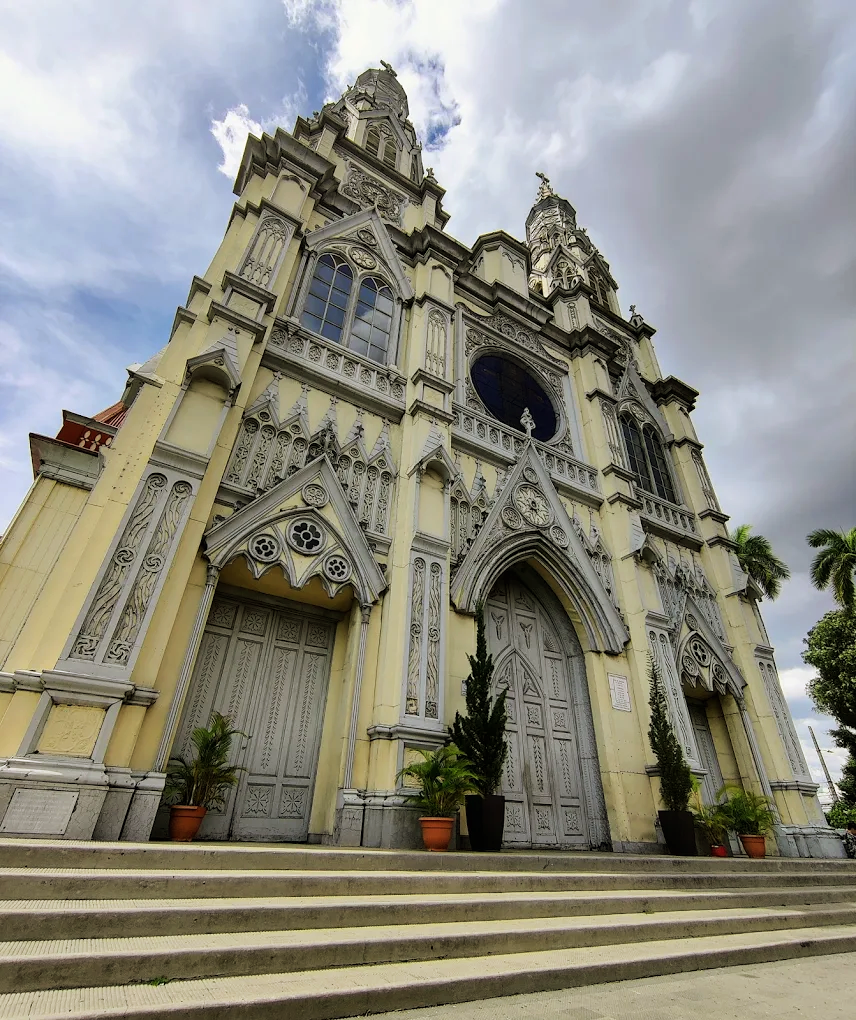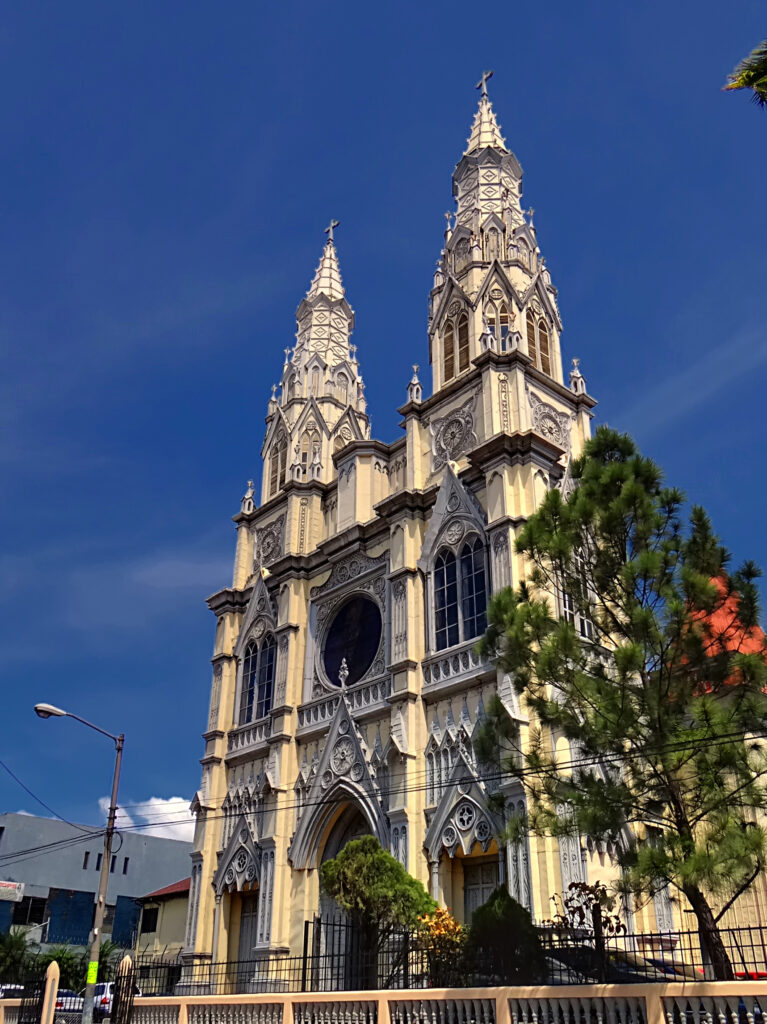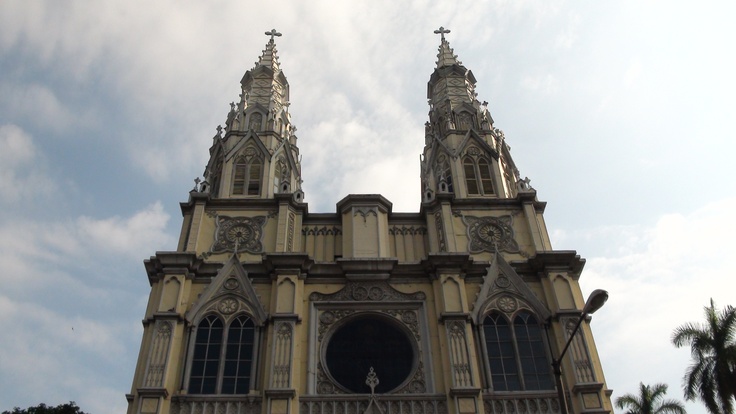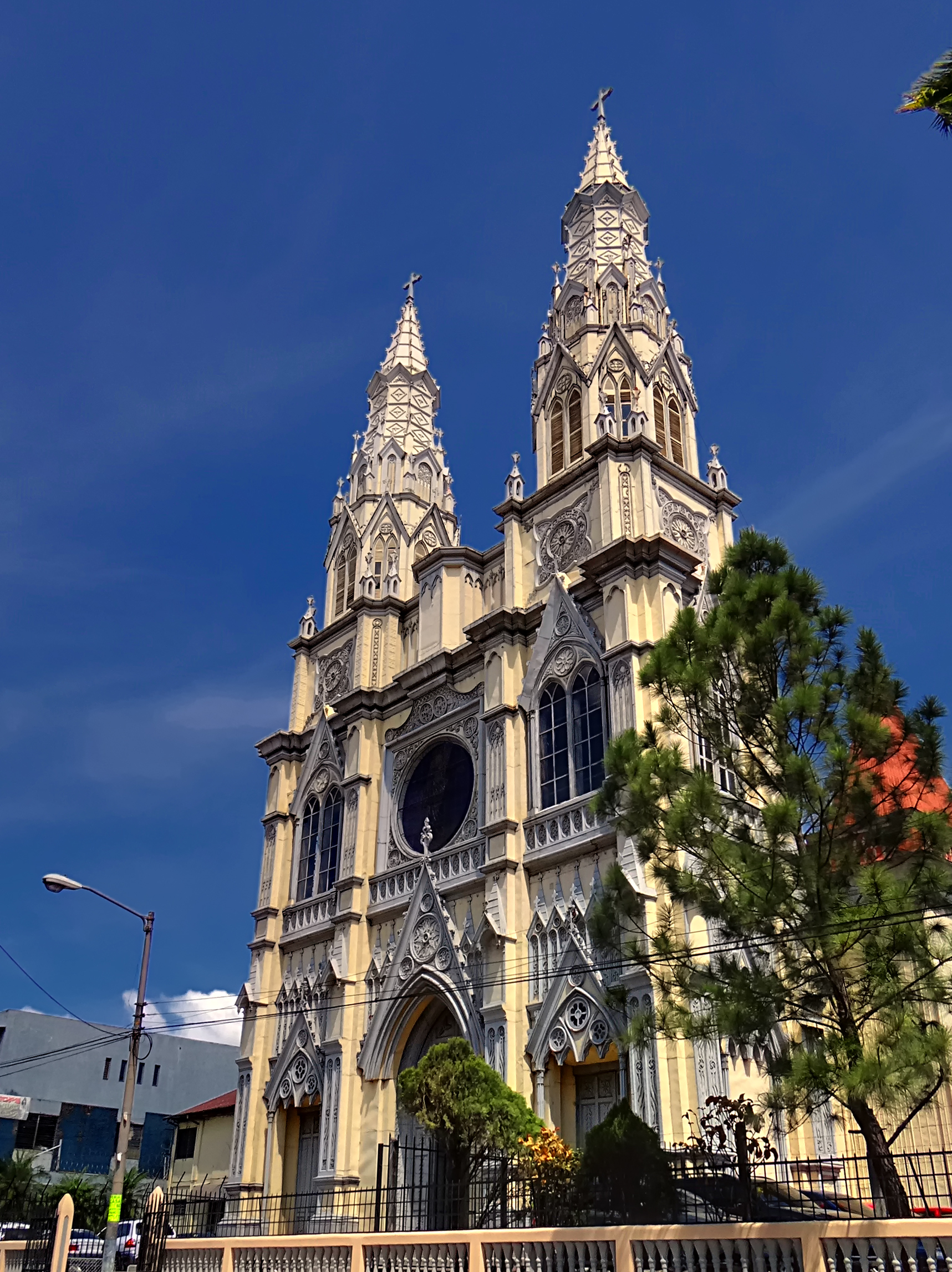Basilica of the Sacred Heart of Jesus
Built in 1901, it is an important architectural and religious landmark in the city. Its design, by Pascasio González Erazo, follows a neo-Gothic style and stands out for its die-cut metal structure, imported from Europe in a style popular at the time to resist earthquakes and fires.

Basilica of the Sacred Heart of Jesus
Originally conceived to unite different social classes, the basilica became an important religious center and, at one point, was the seat of the archbishopric and functioned as a provisional Cathedral. The design incorporates architectural elements that point upwards, reflecting the connection with divinity and spiritual elevation and being the place where the remains of Monsignor Oscar Arnulfo Romero were laid to rest before his funeral in the Central Plaza.


Events
The Basilica was built with the intention of uniting different social classes, consolidating itself as an important religious meeting point outside the original center of the capital, which is why the basilica marks the starting point of the processions of the patron saint of the country, specifically the descent of the image of the Divine Savior of the World to the Cathedral. Monsignor Oscar Arnulfo Romero used it for his homilies in the 70’s, which gives it a significant historical and spiritual value. After his assassination, his body was held a wake in the basilica before the funeral, which culminated in the Central Plaza with a toll of dead and wounded, marking the beginning of the Salvadoran civil war. This structure also has a great recognition for its resistance to earthquakes, and being made of wood and die-cut sheet metal, made in Europe, has proven to be resistant to the many earthquakes that El Salvador has suffered, especially those of 1917 and 2001, standing as an architectural treasure.



Additional data
Get to know relevant information about the Basilica
